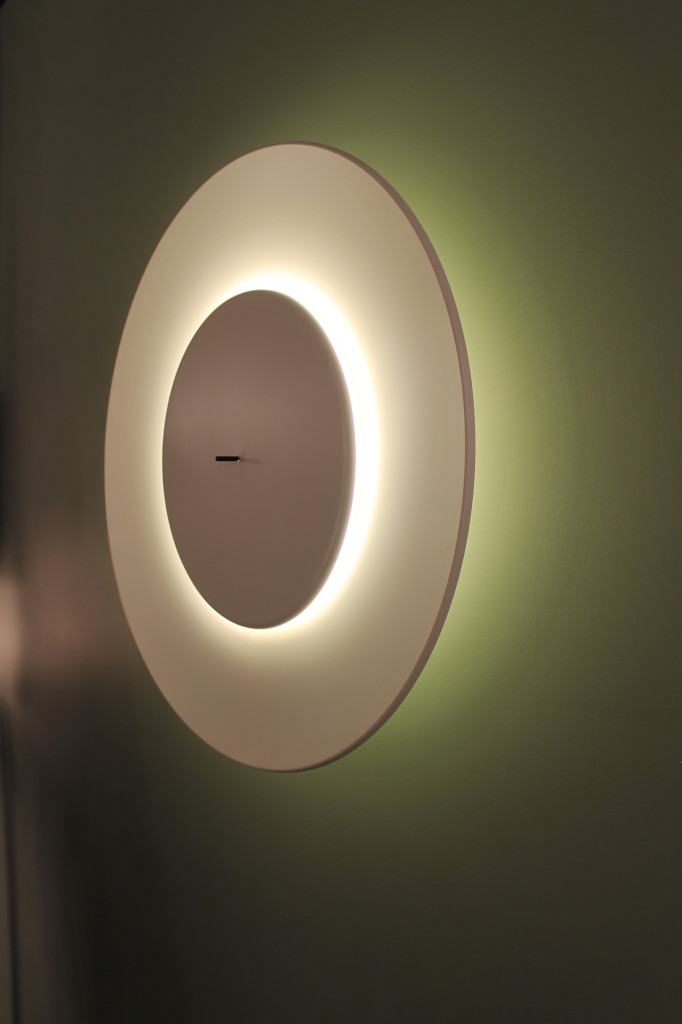Meet Giorgio Biscaro, Art Director of FontanaArte
We have had the pleasure of meeting George Biscaro, the new art director of FontanaArte as of 2012.
What makes FontanaArte unique compared to other companies?
The uniqueness of FontanaArte in my opinion lies in its history, which of course is not exclusive to this brand name, but which nevertheless makes itself felt. It’s a history that, although we aim to review and change it this year, we still respect. I always say that from the moment I came to FontanaArte, despite my very warlike ideas, I was really struck by the amount of existing products and the projects hanging on the wall. Every lamp made in the past, in over eighty years of history, was designed by a Japanese artist and framed and hung on the wall. As you walk in, you immediately take in this large expanse of lamps, and each of these lamps actually existed. You immediately realise that the company has so much history, and it needs to be respected. So one of the values that definitely marks the company is true respect for our history, although looking at the latest projects, this may not be immediately apparent, because there’s quite a break with the more recent tradition of the last 20-30 years in terms of product; we are working on returning to the original intentions of Gio Ponti and his immediate successors, precisely to recreate the basis that made this wonderful Italian company history possible.
Company and Product: How are the pieces that go into production chosen?
They aren’t chosen; they are built. As Perazza says, in design production you always ride tandem: the company and the designer cycle together, but the company holds on to the handlebars, so the product is put together in agreement with the designers, who are invited to collaborate on the basis of the values that their work expresses, starting from my personal analysis of who the designer is, what he has done, and the values behind his design. On this basis, we produce a brief which is then developed together, in close cooperation from the points of view of culture, aesthetics, and technology.
The company and designers: how do you decide which professionals to entrust with the design of the products?
It doesn’t only depend on the stylistic hallmark of each designer, but especially on their approach to the project. There is a constant work of updating, and sometimes scouting, which brings the designer closer in line with our values.
Which is your favourite piece or collection, and why?
My favourite collection is the one that I did, the latest [smiles], because I fully acknowledge all its values. My favourite piece among these … I cannot say it, because it’s my family. Each of these has something that makes me glad I made it. The one that gives me the most satisfaction, because it is the product closest to the old FontanaArte, is Lunaire.
What is FontanaArte’s approach to young designers?
Great! Lunaire was, in fact, designed by Ferreol Babin, a young man who had just graduated when I heard of him. I called him, we met in Paris, and we did the project together, so there is absolutely no barrier to young people. Naturally, you can have a good partnership with people in their twenties as well as nonagenarians – what matters is the project.
Abbiamo avuto il piacere di incontrare Giorgio Biscaro, che dal 2012 é il nuovo Art Director di FontanaArte.
Che cosa rende FontanaArte un’azienda unica rispetto alle altre?
L’unicità di FontanaArte secondo me risiede essenzialmente nella storia, che ovviamente non è esclusiva di questo marchio, ma che comunque lo caratterizza fortemente. È una storia che, benché quest’anno ci siamo prefissi l’obiettivo di rivedere e di cambiare, in ogni caso viene rispettata. io dico sempre che nel primo momento in cui sono arrivato in FontanaArte, pur avendo idee molto bellicose, sono rimasto colpitissimo dalla quantità di prodotti esistenti e dei progetti che sono appesi al muro. Ogni lampada che è stata fatta nel passato, in oltre ottanta anni di storia, è stata in passato disegnata da un’artista giapponese e poi incorniciata e appesa alla parete. Entrando in azienda si vede subito a colpo d’occhio questa grande distesa di lampade e ognuna di queste lampade è esistita realmente. Ci si rende immediatamente conto che l’azienda ha tanta storia, che impone rispetto. Quindi sicuramente uno dei valori che caratterizza principalmente l’azienda è il rispetto vero della nostra storia, anche se guardando gli ultimi progetti questo potrebbe non apparire immediatamente, perché rompono molto con la tradizione più recente degli ultimi 20-30 anni del prodotto, stiamo facendo un lavoro di recupero delle intenzioni originali di Giò Ponti e di chi l’ha seguito subito, proprio per ricreare le basi che hanno reso possibile questa bella storia aziendale italiana.
Azienda e prodotto: come vengono scelti i pezzi che entreranno in produzione?
Non vengono scelti, ma vengono costruiti. Come dice Perazza, in un prodotto di design si pedala sempre in due: l’azienda e il designer pedalano in tandem, però il manubrio ce l’ha l’azienda, per cui la costruzione del prodotto avviene di comune accordo con i designer, che vengono interpellati in base ai valori che il loro lavoro esprime, a partire da una mia analisi in prima persona di quello che è il designer, di quello che ha fatto, di quelli che sono i suoi valori progettuali. In base a quello si costruisce un briefing che poi viene sviluppato insieme, in stretta collaborazione sia dal punto di vista culturale, estetico, e tecnologico.
Azienda e designer: come vengono decise le collaborazioni con i professionisti a cui affidare la progettazione dei prodotti?
In base non solo alla cifra stilista di ognuno, ma sopratutto all’approccio progettuale. C’è un costante lavoro di aggiornamento, a volte di scouting, che rende il designer più vicino a quelli che sono i nostri valori.
Qual è il tuo pezzo o collezione preferita e perché?
La collezione preferita è quella che ho fatto io, l’ultima [sorride] perché ne riconosco in pieno tutti i valori. Il pezzo preferito tra questi… non posso dirlo, perché è la mia famiglia. Ognuno di questi ha dei punti che mi hanno reso felice di averlo fatto. Quello che mi sta dando più soddisfazione, perché è il prodotto più vicino alla vecchia FontanaArte, è Lunaire.
Come si pone FontanaArte nei confronti dei giovani designer?
Benissimo! Lunaire infatti è stata progettata da Ferreol Babin che è un ragazzo che si era appena laureato quando l’ho sentito. l’ho chiamato, ci siamo incontrati a Parigi e abbiamo fatto il progetto insieme, quindi assolutamente non c’è nessuna preclusione verso i giovani. Ovviamente si possono trovare buone collaborazioni nei ventenni così come nei novantenni, quello che fa tutto è il progetto.
2 Responses to “Meet Giorgio Biscaro, Art Director of FontanaArte”




Giorgio è un grande!
Si Adele, è davvero una persona interessante!